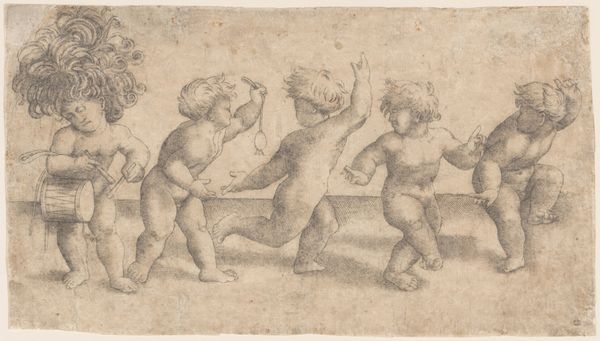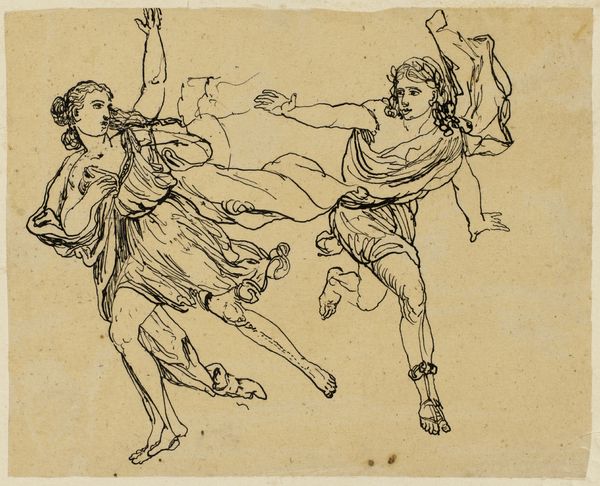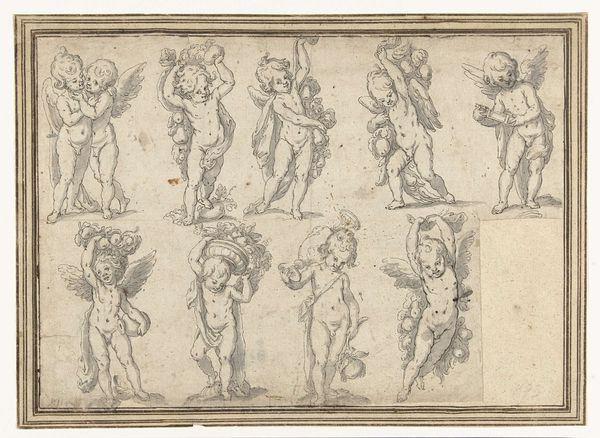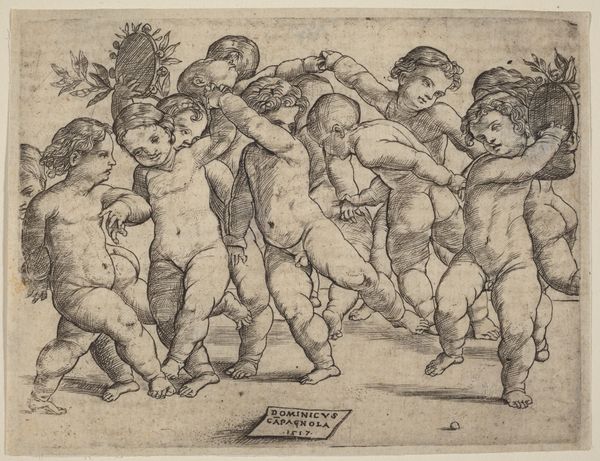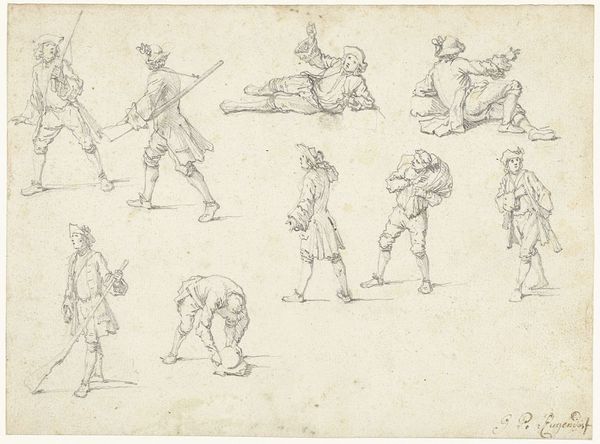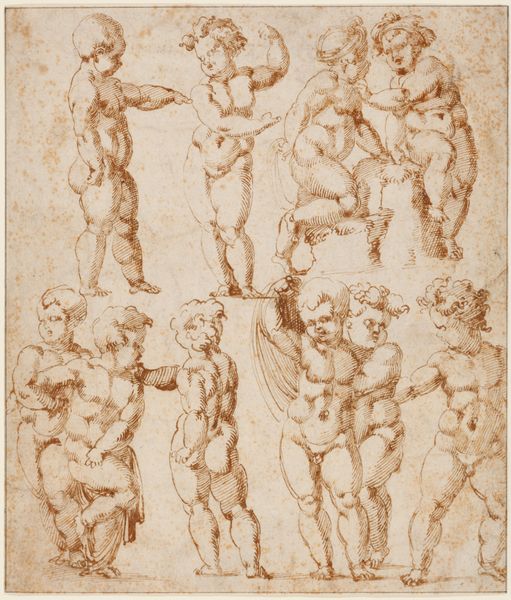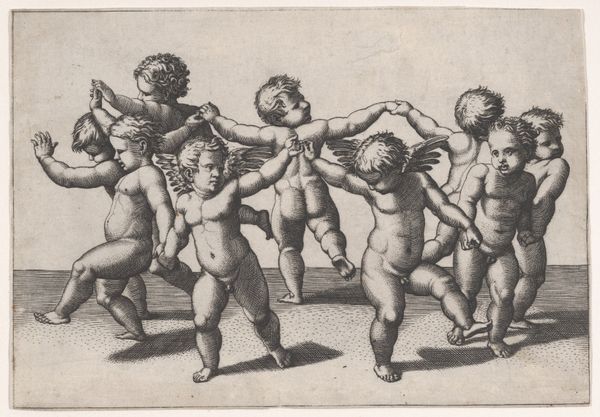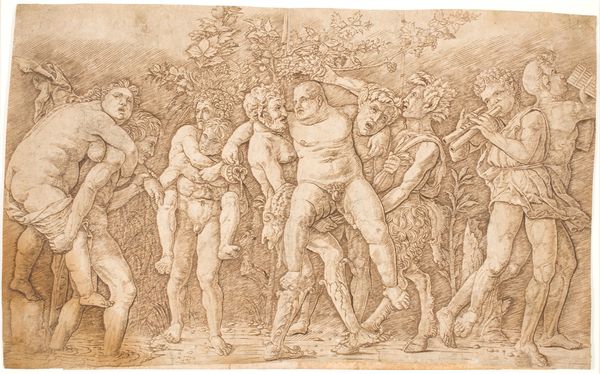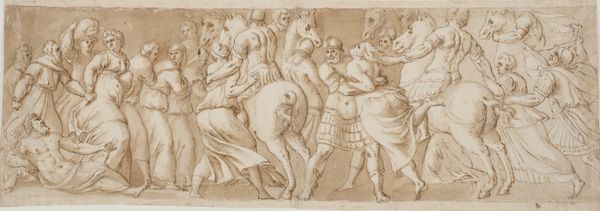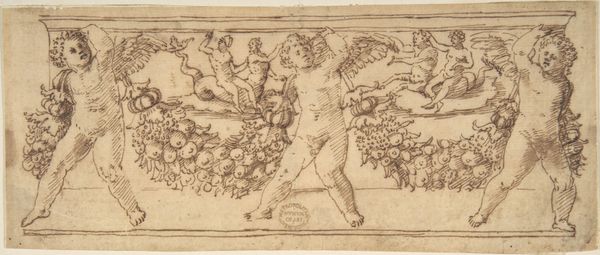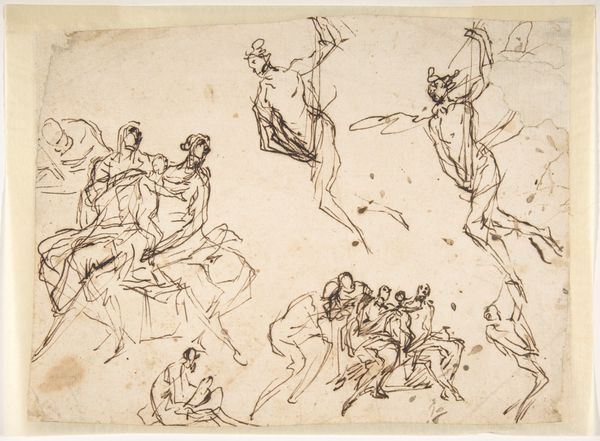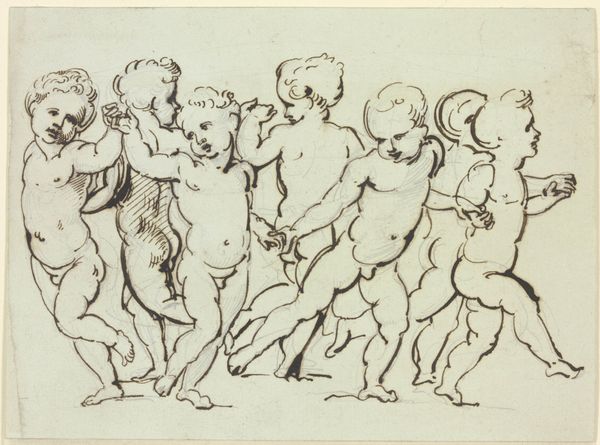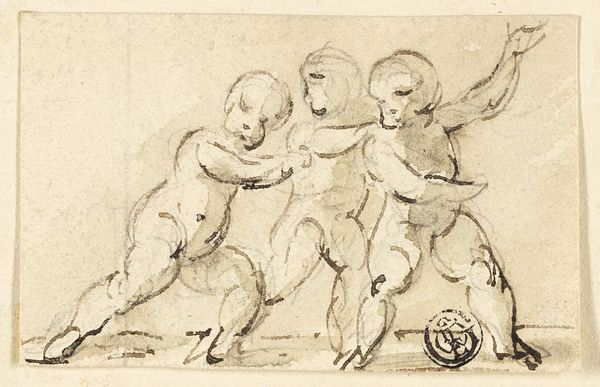
Dimensions: 312 mm (height) x 208 mm (width) (bladmaal)
Editor: Here we have "Frieze with two rows of dancing cupids" by Nicolai Abildgaard, created sometime between 1743 and 1809, using ink, drawing and watercolor. What a charming sketch! There's something so lively and rhythmic about the composition. What strikes you most when you look at it? Curator: It's the dynamic interplay between line and form that captivates me. Notice how Abildgaard uses simple, almost sparse lines to define the figures. Consider the structural relationship between the two rows. How does their parallelism impact the overall reading of the image? Editor: I see what you mean, the lines really bring out the movement, like they're caught mid-dance. The bottom row mirrors the top, yet each Cupid has their unique pose. Does the landscape style contrast the artist's figuration, do you think? Curator: Indeed. We are invited to examine how Abildgaard employs repetition and variation within a carefully structured framework. While the style is deemed "landscape," it should be acknowledged that this piece exists on paper. What implications might this have? Editor: That's an excellent point. It makes me consider the texture, with the slight bleed of the ink, how it interacts with the paper...it’s a raw kind of movement against this subtle wash. It highlights a beautiful balance, it seems, where neither completely takes over. Curator: Precisely. We see a delicate negotiation between medium, figure, and support, achieving a captivating effect through formal means alone. What do you make of the cupid’s positioning? How does this relate to conventions from romanticism? Editor: I hadn't thought of it that way! It feels so much more involved when you start digging into it! Thank you! Curator: My pleasure. Focusing on the form itself often unearths a richness that goes beyond surface level interpretations.
Comments
No comments
Be the first to comment and join the conversation on the ultimate creative platform.
